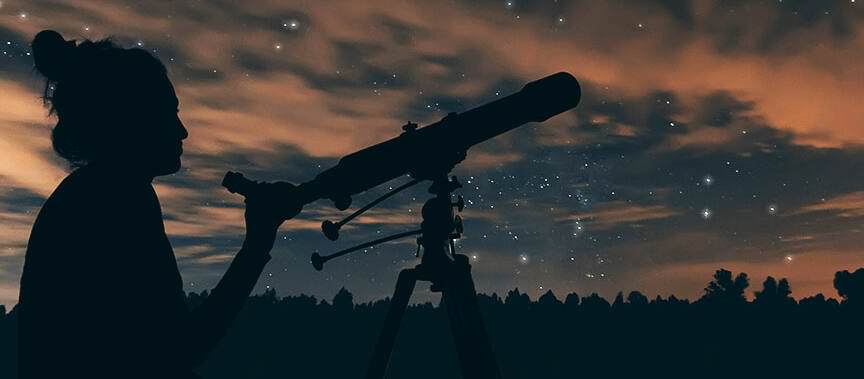
Before discussing the objects that can be observed through a telescope, it is important to understand some basic information about these instruments and their different types.
To enjoy the view of the night sky from the comfort of your own home, it is essential to select the appropriate optical device. The price range for a home telescope can vary from 12,000 to 50,000 rubles, depending on the quality of the eyepiece.
Aperture
The aperture is the most crucial feature of a home telescope. It determines what can be observed through the telescope based on the diameter of its lens. When purchasing a telescope, it is essential to take note of the specifications of the focusing unit located near the box or at the front of the tube. Ideally, the aperture should be at least 2.8 inches. With this aperture size, it becomes possible to observe not only faint celestial objects but also intricate details.
What can be seen through a 70 mm telescope? For instance, the observer will be able to view numerous galaxies beyond the Milky Way. However, in order to achieve the desired outcome, it is crucial to conduct observations in darkness and avoid the presence of artificial light sources.
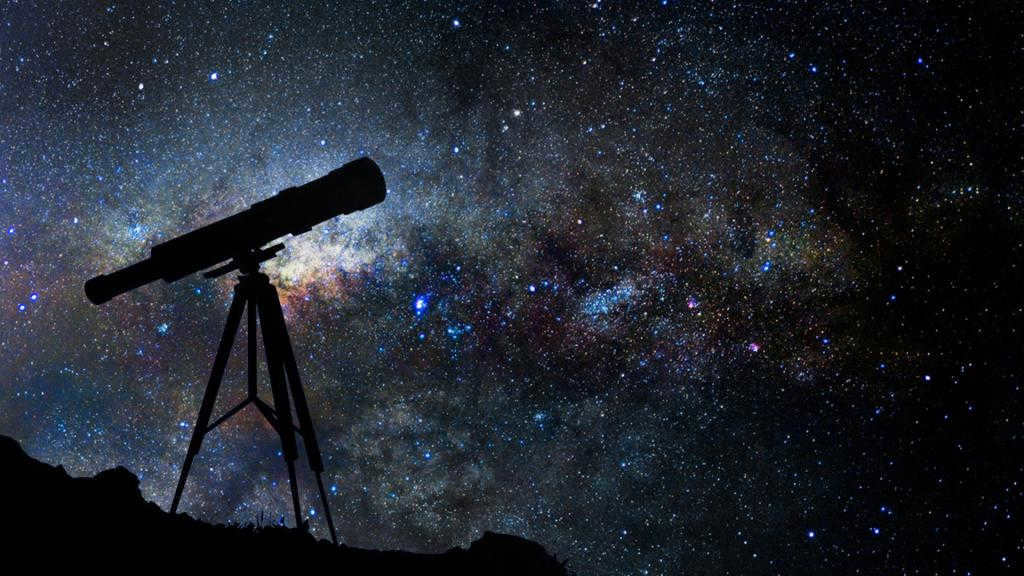
Various Kinds of Telescopes
Choosing a telescope can be a challenging task. For instance, many stargazing enthusiasts opt for a 30x telescope for home use. What can you see with such a device? First, let’s discuss the main types of telescopes that are available to astronomy enthusiasts.
Refractor telescopes, also known as lens telescopes, feature a lens positioned at the front of the tube. They are the most popular type of optical instruments. Although they have low operating costs, their price is relatively high and directly depends on the maximum aperture value. What can you observe with a beginner-level telescope? The captivating images captured with these devices are truly mesmerizing.
Mirror-lens models, which combine two technologies simultaneously, are significantly smaller and lighter. However, these telescopes are also the most costly in terms of price. The most sought-after variations of fundamental telescopes include:
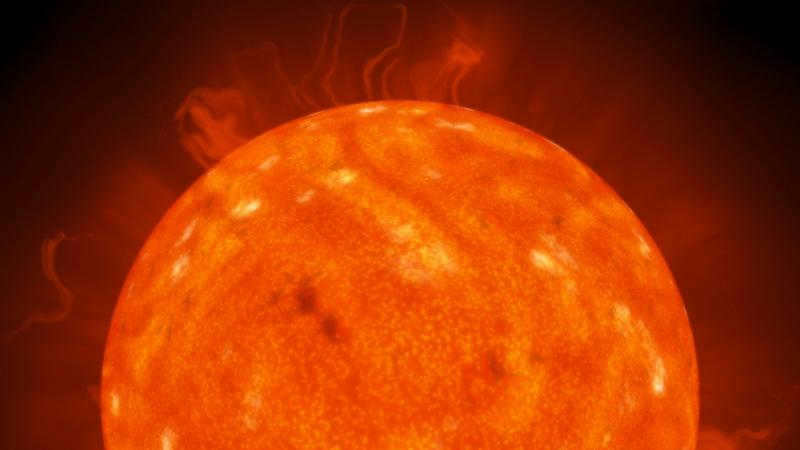
Adjusting the Focus
What can be observed through a telescope? The answer to this question relies on its “power”. For instance, if the telescope has a focal length of 500 mm and a 25-mm eyepiece, the magnification of the instrument will be 20 times. Contemporary manufacturers provide telescopes with one or two eyepieces, allowing users to modify the level of magnification by replacing them.
Telescope Mounting Options
Prior to purchasing a home telescope, it is crucial to consider the mounting options in order to fully appreciate the beauty of the night sky.
Typically, telescopes are sold with tripods and specialized mounts. However, smaller telescopes often only come with a mounting block, which allows you to attach the telescope to a standard tripod using a single screw.
Using standard mounts enables the telescope to perform spherical rotations.
What can you observe with a telescope that has this type of mount? For instance, you can have the opportunity to marvel at the stars within our own Galaxy.
For more advanced mechanisms, you can track the movement of stars as they rotate along a single axis. These mounts are heavier and more suitable for professionals. Before utilizing the telescope, it will be necessary to calibrate the instrument using Polaris.
In modern high-end mounts, there are compact motors incorporated that enable sky tracking, complete with a remote control.
What does this type of telescope allow you to observe? Observing transforms into an enlightening excursion that encompasses a comprehensive view of the most captivating celestial displays.
The most cutting-edge models of this kind, known as Go To telescopes, boast a small computer that grants the ability to manipulate the telescope. By inputting the current date, time, and location, it can not only label the celestial objects themselves but also provide descriptions of everything observable through the telescope. As a result, the exploration of the starry sky becomes a riveting event for astronomy enthusiasts. Among the drawbacks of such devices, experts highlight the challenges associated with the calibration process, as well as the steep price tag of the apparatus.
A telescope is an instrument used for observing celestial objects. The quality of the telescope’s optics directly affects the clarity of the images it produces. For high-quality photos, it is recommended to use a telescope with a lens diameter of at least 70 mm.
The lens diameter also determines the brightness of the image and the level of magnification for observing celestial bodies.
An amateur telescope with high resolution can be used to observe double stars, planets, clusters, galaxies, nebulae, and other interesting celestial objects. This includes unique star formations, planets, comets, the Sun, and the Moon, all of which can be easily observed using a home telescope.
However, which planets are visible through a telescope? With even a relatively modest instrument, it is possible to observe the surface of the Moon. Let’s focus more on celestial objects that can be seen by amateur astronomers.
Moon
So, what can you see with a home telescope? The image below serves as evidence that our planet’s natural satellite is easily observable.
Astronomers firmly believe that there is no spectacle more captivating and alluring than the view of the lunar surface through a telescope. It is important to be patient and wait for the Moon to appear in the sky before beginning astronomical observations.
What can be observed through a telescope on the Earth’s satellite? The images below demonstrate that there are furrows and crevices, cirques, mountains, and craters that can all be explored visually while observing the Moon by adjusting the telescope’s handle.
Astronomers consider the private phases of the lunar surface to be the optimal time for observation through a telescope, when it appears as an incomplete disk or crescent.
During this period, it is possible to observe shadows on the Moon’s surface, which reveal finer details, such as the boundary between dark and light areas known as the terminator. Is it possible to observe the full moon phase through a telescope? Absolutely, and one can even study the radiant light structures emanating from certain craters.
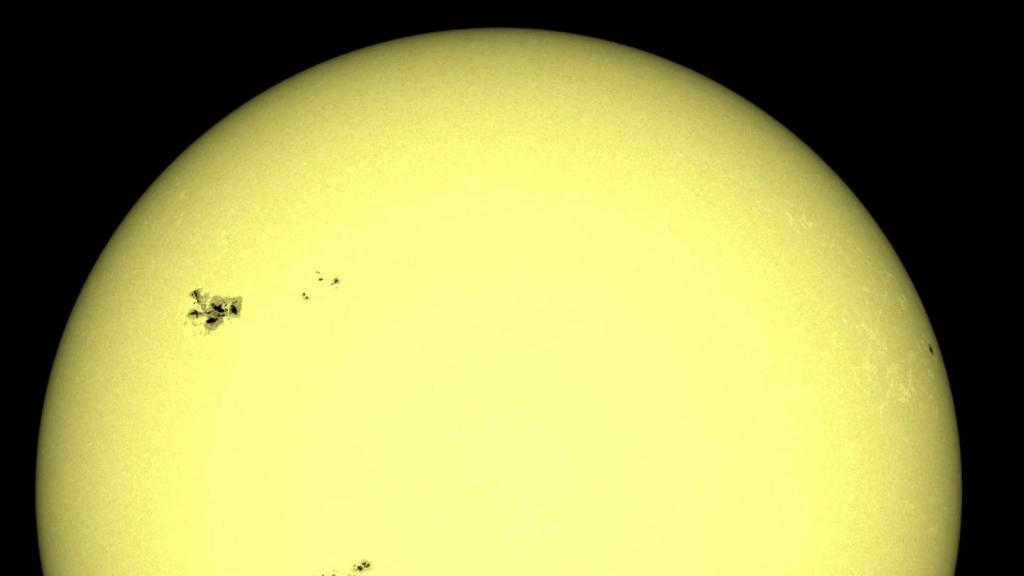
The Sun
It is crucial to have the necessary knowledge when it comes to observing the Sun. Professionals advise against using protective eyewear while conducting such observations. Astronomers caution individuals interested in observing the Sun that it is impossible to do so without solar filters in a telescope, as the Sun can cause blindness.
What is visible through a telescope? Amateur photographs provide evidence that the primary focus of observations on its surface are sunspots. These spots undergo constant changes in shape, allowing for the observation of their transformation when viewed at different times. Within each group of spots, there are two prominent ones referred to as the “mom” and “dad,” with smaller spots surrounding them known as their “babies.” As the Sun is the only celestial object visible during daylight hours, enthusiasts take pleasure in studying it using their personal telescopes.
Planets
Can we observe Saturn through a telescope? Let’s find out. Fortunately, when observing Saturn through any telescope, it is possible to see its iconic rings if they are turned towards the edge. Additionally, if you have a telescope with a diameter exceeding 10 centimeters, you may also be able to observe the Cassini division, as well as the separation of the rings into inner and outer zones.
Unfortunately, for those passionate about stargazing, observing planets through a telescope can be a bit disappointing. Many planets appear as small “peas” in which it is challenging to discern any significant details.
This celestial body appears to be flattened when observed through a telescope. Its flattened shape is a result of its rapid rotation on its axis. Additionally, one can observe a group of planets that serve as satellites to Jupiter. These satellites are referred to as the Galilean moons as they were first discovered by Galileo Galilei.
Upon closer examination, one can observe distinct bands across the surface of this planet. A small telescope may only reveal two bands, but with a high-quality eyepiece, astronomers can observe over six bands. Furthermore, within the planet’s disk, visible through a telescope with a lens diameter larger than 10 cm, lies the Great Red Spot, a well-known massive vortex in the planet’s atmosphere.
Of particular interest are the various phenomena observed within the system of Galilean moons, such as their passage across the planet’s disk and their entry into and exit from its shadow.
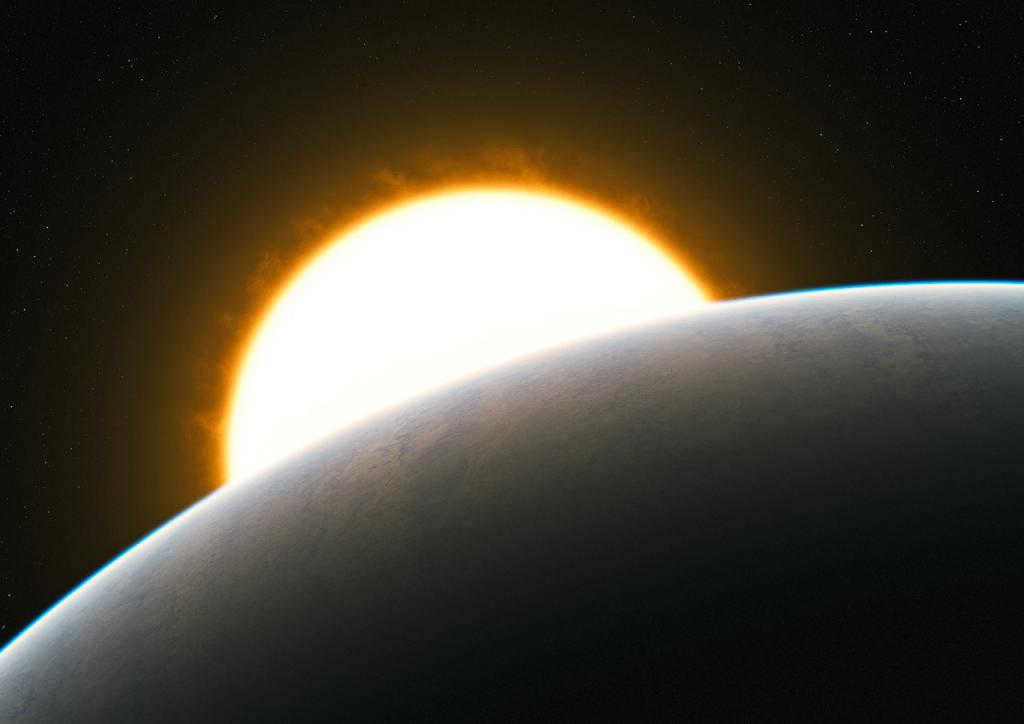
The Planet Mars
When looking through a telescope, Mars appears as a small, reddish sphere with a white cap at its pole. During oppositions, which occur when Earth and Mars are closest together, various dark spots can be observed on the surface of the “red planet.” Astronomers refer to these spots as seas. Some of these seas are barely visible, while others can be seen clearly. In fact, even dust storms can be observed on Mars using large telescopes. During such storms, the outlines of the seas seem to vanish from the planet’s disk, as if they were erased with a common eraser.
It may prove challenging to observe such details on Venus and Mercury, but these planets do offer the opportunity to observe phases through a home microscope. For those interested, a microscope can even reveal the star-shaped Uranus, which has a faint bluish-green disk. Additionally, amateurs can enjoy the sight of Neptune, which appears as an ordinary star.
Multiple (double) stars
Multiple or double stars, as astronomers call them, are not only limited to planets in our solar system. They also include other stars that revolve around each other. When observed through a telescope, these star pairs or groups can provide a mesmerizing spectacle. One example is when two stars of different brightness and color are in close proximity, resulting in a stunning visual display. Whether you have a large or small home telescope, you can observe these unique stars and witness their beauty firsthand.
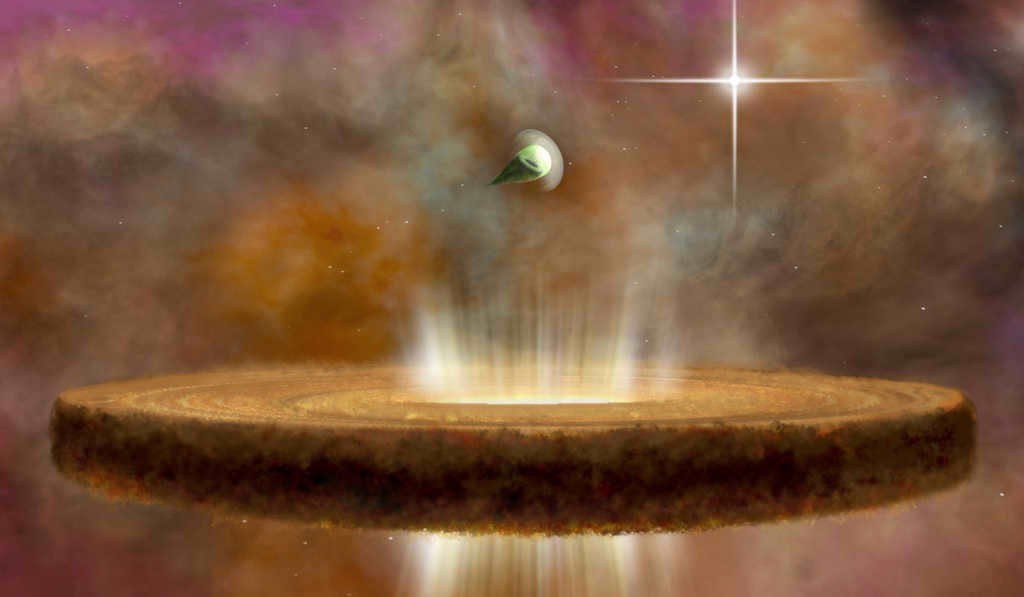
Clusters of Stars
Star clusters are commonly known as groups of stars, varying in size from large to barely distinguishable. In the field of astronomy, they are typically classified into two types. The first type is scattered star clusters, which have an undefined shape and lack a concentrated center. The second type is star globular clusters, which are dense “balls” consisting of millions of stars.
It is not necessary to invest in an expensive telescope to observe a massive cluster of stars. Even with small telescopes, scattered clusters can be easily seen as small, circular spots. With a high-quality instrument, an observer can witness a multitude of stars, referred to as a star swarm in the field of astronomy.

Astrophysical Clouds
Astrophysical clouds, like galaxies, pose a challenge when it comes to observing them through a telescope, as a dark sky is necessary for optimal viewing conditions. Achieving the desired results within the confines of an urban apartment can be difficult. While they may appear as vibrant and captivating objects in color pictures found in magazines, when observed through a home telescope, astrophysical clouds may appear as dull gray spots lacking intricate details. However, with a lens of at least 200 mm, it is possible to closely examine the individual elements of these celestial bodies. Nevertheless, owners of smaller telescopes need not despair, as there are still opportunities to observe certain astrophysical clouds, such as the Dumbbell Nebula in the constellation Vulpecula, the Ring Nebula in the constellation Lyra, and the Orion Nebula.
Galaxies
Galaxies are enormous celestial bodies that make up the vast expanse of the Universe. Each galaxy is like a distant island, housing billions of stars within its borders. While they may be challenging to observe with a regular home telescope, there are plenty of galaxies that can be seen. However, instead of seeing detailed structures, you will mostly encounter clusters of bright white dots, each with its unique shape. Astronomers assure us that even a small telescope can reveal wonders such as the Andromeda Nebula, as well as distinguish between the galaxies M82 and M81 within the constellation of the Big Dipper.

Astrosphere Objects
These celestial entities manifest themselves in our atmosphere without any prior warning. When observed through a telescope, comets appear as hazy spots with one or several luminous tails that extend away from the Sun. Although small comets can be seen in the sky periodically, bright objects of this kind are quite rare. Astronomers accord special attention to these unexpected visitors and conduct thorough investigations. Therefore, amateur astronomers are advised to stay informed about upcoming events in order to catch a glimpse of these “wandering tails” through their own home telescopes.
Every telescope has the potential to be represented as a grandiose optical instrument. Besides its primary function of observing celestial bodies in the night sky, such devices can also be utilized for studying objects on Earth. Telescopic apparatus, for the most part, are designed to produce a mirrored or inverted image, so when conducting terrestrial investigations, special rotating prisms need to be employed. These prisms assist in rectifying any imperfections in the image, transforming it from a mirrored depiction to a direct representation.
Conclusion
Astronomy is an intriguing field of study that continues to attract more enthusiasts every year. To fully appreciate the breathtaking views of the night sky from the comfort of your own home, it is crucial to approach telescope selection with care. However, acquiring the right equipment is only half the battle. In addition to a high-quality telescope for observing star clusters, planets, and comets, one must also possess experience and the ability to analyze what is seen.
An experienced astronomy enthusiast, even with a modest telescope, can spot a far greater variety of celestial objects compared to a beginner who, armed with an expensive device, gazes at the sky from a balcony in the city.
For those who are just starting to learn the fundamentals of studying the night sky, professionals offer the advice of not becoming discouraged.
So, which celestial objects can be observed through a telescope? Even with a small optical device, it is possible to enjoy incredible views of the Moon. Equipped with a 200 mm telescope, astronomers can closely examine craters that are approximately two kilometers in size.
If your plans involve observing planets, it is recommended to purchase a telescope with a lens diameter of 150 mm. The phases of Venus and Mercury, the polar cap of the “red planet” during the Great opposition, and even the ring of Saturn are all easily accessible for study. By familiarizing themselves with the positions of celestial bodies in the night sky, amateur astronomers will have no trouble locating star clusters.
Whether it’s observing with the naked eye, binoculars, or a telescope, knowing where to observe celestial objects, how to select the right optics, and where to study as a beginner amateur astronomer are all important considerations.
Is it possible to stargaze while living in a city?
It is often difficult to see even the brightest stars in the sky when living in a big city, especially in the central districts. The presence of gas pollution and light pollution, caused by the bright electric lights from numerous street lamps, neon signs, and spotlights, is to blame. This is why most astronomical observatories are located outside of urban areas.
The sky, “polluted” by artificial light, lacks the necessary contrast for proper visual studies. Even a powerful telescope cannot compensate for this. To find a suitable location for stargazing, amateur astronomers rely on light maps, which show areas with less light pollution.

During the summer months, make sure to search for the magnificent Great Summer Triangle in the celestial sphere – it consists of the three most brilliant stars of the summer sky: Vega, Deneb, and Altair.
The Great Summer Triangle / Stellarium
In the winter season – from December to March – keep an eye out for Sirius, a binary star system that shines the brightest in the nocturnal firmament, and Betelgeuse, a massive red supergiant that is 1,000 times larger than the Sun.
Sirius in the night sky / Photo by Mario Mesaglio on Unsplash
There are five planets (notable for their luminosity) that can be observed in the nighttime sky without the aid of telescopes: Mercury, Venus, Mars, Jupiter, and Saturn.
Planets are usually visible at all times, except for brief periods when they come very close to the Sun. The best time to observe them is during oppositions, which occur when they are opposite the Sun. The opposition of Jupiter is expected on June 11, 2019, and Saturn on July 10. It is not possible to see all the planets simultaneously. Stellarium can provide the schedule of their appearance.
Unlike stars, which appear stationary relative to each other when seen with the naked eye, planets (the word “planet” literally means “wandering star”) move across the sky, and they do so quite quickly. Moreover, while stars may appear to flicker, planets emit a steady glow.
What about observing shooting stars? You can witness them even without using any optical aids. In reality, shooting stars are not actually stars; they are meteors – small solid objects that burn up upon entry into the Earth’s atmosphere. One of the most spectacular meteor showers is the Geminids. However, it occurs in mid-December, when the weather conditions are not particularly favorable for stargazing. Another prominent meteor shower known as the Perseids can be observed from July 17 to August 24 in 2019. The peak viewing time for this shower will be on August 13. The 2019 meteor shower schedule provided by the International Meteor Organization (IMO) can be accessed here.
I possess a pair of travel binoculars. Which sights can I observe with them?
If you have tourist binoculars with a low magnification (8-10x) and a small lens diameter (25-30 mm), you can still enjoy some fascinating views. These binoculars will enable you to spot large craters on the Moon and examine the intricate structure of its surface. Furthermore, you can attempt to catch a glimpse of Jupiter’s four largest Galilean satellites – Io, Europa, Callisto, and Ganymede. For more detailed information, refer to Eduard Vazhorov’s book “Observing the starry sky with binoculars and telescopes.”
If you desire to see even more celestial wonders, you may want to consider investing in more advanced optics such as astronomical binoculars or an amateur telescope.
When it comes to selecting a device, the diameter of the lens is a crucial factor. The larger the diameter, the more light the lens of a telescope or binoculars can gather, resulting in a more detailed image. Another important aspect is the quality of the optics, as it directly affects the clarity of the image. While the prices for telescopes can reach astronomical heights, there are affordable options available for beginners. For those who are just starting out, optics with a lens diameter ranging from 70-120 mm and a focal length of at least 750 mm are recommended. Some of the best telescope brands in the market include Sky-Watcher, Meade, and Celestron. These brands offer telescopes starting at 10,000 rubles. For instance, the Sky-Watcher BK 707AZ2 is a budget-friendly option that should not be mistaken for a mere toy.
For optimal deep sky observations of galaxies, nebulae, and star clusters, a reflector mounted on a Dobsonian mount is the perfect choice. Reflectors are telescopes that utilize mirrors as their light-gathering components. They offer a high level of power, and their large objective lens diameter allows for a concentrated amount of light to be gathered, resulting in clear views of distant and faint objects.
If you prefer to observe the stars with both eyes, astrobinoculars are a suitable option. They have a lower magnification compared to telescopes, and their fixed lenses make them convenient and easy to use.
Both telescopes and binoculars used for astronomical purposes are usually quite heavy, and it is recommended to use them in conjunction with a tripod. This helps to stabilize the equipment, as even slight hand movements can significantly impact the quality of the observed image.
What can you observe using telescopes and astrobinoculars?
Equipped with optical devices, you can begin by examining the surface of the moon. Observe the majestic mountains, craters, and vast seas, and witness the terminator, the line where light separates the illuminated section of the moon from the shaded part. The key to observing the moon lies not only in the quality of the optics but also in the condition of the atmosphere – the level of pollution and the absence of turbulence.
When observing through a telescope, you will be able to see Jupiter’s moons, cloud belts, and the Great Red Spot – an enormous storm, the largest atmospheric vortex in our solar system, spanning a length of 50,000 kilometers. Saturn will unveil its iconic rings. Additionally, you will discover that Venus, much like the moon, goes through phases, and some stars are not solitary objects but complex systems – double, triple, and so on.
The Andromeda Nebula, the closest large galaxy to the Milky Way, can be observed as a hazy cluster of stars when viewed from outside the city limits using binoculars for tourists. However, when observed through a telescope, it appears as a luminous spot with intricate swirls and a faint haze. Similarly, the constellation of Orion boasts one of the brightest nebulae – M42. While the naked eye perceives it as a faint spot, a telescope unveils a complex structure of gaseous formations resembling wisps of smoke.
Bright comets, which are visible even to amateur astronomers and sometimes to the naked eye, rarely come close to Earth. The current tables and this resource provide a list of comets that are currently available for observation.
By utilizing optics, it becomes feasible to observe the Sun. By employing an ordinary telescope and a specialized light filter (it is imperative to use filters – failure to do so may result in severe and irreversible damage to the retina!), one can witness sunspots. However, to observe granulations, chromosphere, and prominences – fiery tongues that emerge as a consequence of the ejection of solar matter to an altitude of up to 40,000 km – one must utilize specific chromospheric telescopes, such as the Coronado.
On the Heavens Above website or Android app, one can discover information regarding the nearest flybys of the ISS and other satellites. When observed with the naked eye, the ISS appears as a remarkably bright, moving dot of either white or blue hue. By employing optics, one can examine the station in intricate detail. Of course, luck is required – it moves quite rapidly.
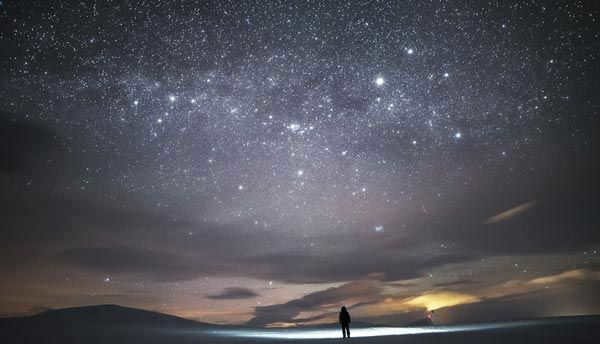
If you enjoy occasionally taking a pause and marveling at the stunning night sky, then engaging in the activity of stargazing can provide a great deal of pleasure and fulfillment in your life.
Whether you choose to practice this activity from the convenience of your urban home or venture to remote locations for an enhanced view of the stars, here is a compilation of suggestions to ensure that you make the most out of this incredible experience.
Reach greater heights
If you are intending to observe the stars from your residence and you reside in an urban area, the most effective action you can take is to ascend to the highest point available.
This will enhance your ability to see the sky since cities are filled with numerous sources of artificial light.
In addition, it is advisable to minimize the use of your phone or flashlight, as any additional light will further obstruct your visibility due to the existing light pollution.
Tools and Devices

One mistake that many beginners tend to make is jumping into investing in a high-quality telescope too early. This might not be the best decision, especially if you’re not completely certain that you’re committed to this hobby in the long run.
Instead of going for a telescope, you could consider getting a pair of good binoculars from a reputable brand that comes highly recommended by both customers and experts.
Starting off with a telescope might lead to disappointment when it comes to actually using the device. These products generally have a somewhat complex design.
Be aware of the optimal viewing conditions
Optimizing your stargazing experience largely depends on choosing the correct timing.
- Experienced astronomers recommend seeking out your favorite constellations during winter nights when the air is less humid.
During the summer, the increased humidity can create a hazy atmosphere that obstructs your view.
- Additionally, it is advisable to choose nights when the moon is not full, as its light can interfere with the clarity of the sky.
If you are interested in observing the Moon, it is advisable to wait for its waning phases. This is the most opportune time to witness the magnificent celestial body’s distinctive textures in all their splendid splendor. For additional fascinating insights, be sure to explore the compilation of “10 Commonly Known Facts that are actually just popular misconceptions.”
Introduction
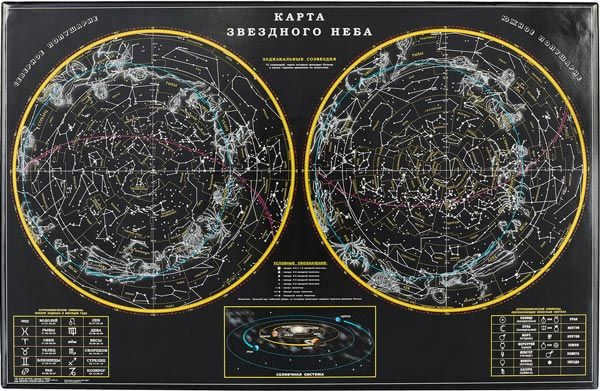
As a novice, if you lack a basic understanding of what can be observed in the sky, there won’t be much for you to see.
- If you don’t have an experienced stargazing friend, consider using a star chart.
If you want to make better use of technology, there is another option available.
There are applications that are specifically designed for use on smartphones, as well as computers or laptops. This way, you can easily find the one that suits your needs the best. Don’t miss out on: 8 entertaining puzzles to challenge your intellect.
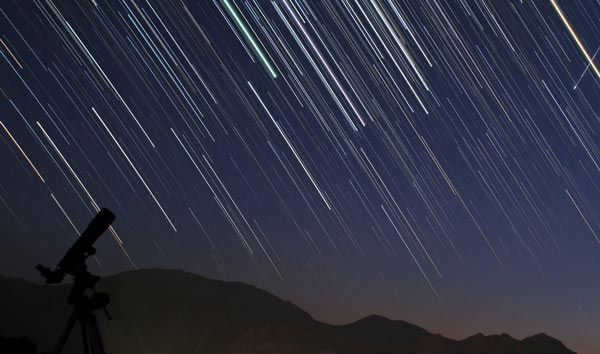
- One option available to you is reaching out to other astronomy enthusiasts in your locality.
By doing so, you have the opportunity to engage with individuals who have a similar interest in stargazing and likely possess a greater level of expertise.
Do not feel daunted
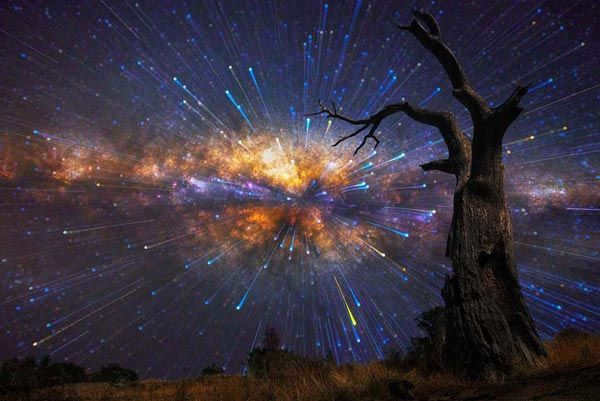
While it’s true that observing the Vast Sky can be overwhelming, do not allow that feeling to consume you. By dedicating a little time and effort, you will soon be able to locate your preferred constellations and other celestial entities.
Stargazing – is one of those activities that is sure to captivate you, regardless of whether you are a child or an adult. Its allure also lies in the fact that it allows you to disconnect from the screens that surround us on a daily basis. Take a break from technology and spend some time communing with nature.
Furthermore, stargazing is widely regarded as one of the most romantic date ideas you can opt for.
Therefore, if this pastime appears attractive to you, do not squander any additional time. Seize your binoculars and celestial map and commence investigating the astonishing nighttime heavens. Ultimately, irrespective of your place of residence, this is a pastime that you can engage in from the convenience of your own abode.
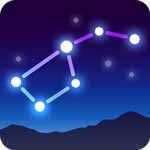
Star Walk 2 Free: Stellar Chart and Celestial Navigation
Get this application, an engaging companion for exploring the night sky and identifying constellations. Discover the wonders of astronomy and space on your mobile device!
If you find yourself on a clear, moonless night, far away from bustling cities and their artificial light pollution, you will undoubtedly pause for at least a minute, captivated by the breathtaking sight of the starry sky. Each of those twinkling stars represents a sun, many of which are larger and hotter than our very own. And who’s to say that each of those stars doesn’t have its own set of planets, and perhaps, even the potential for life? It’s even possible that at this very moment, unbeknownst to you, your gaze might meet the gaze of another being. If you’ve ever experienced even a fleeting sense of wonderment like this, you can easily empathize with those individuals who have managed to hold onto that feeling for a lifetime and are often willing to invest significant time and money into stargazing.
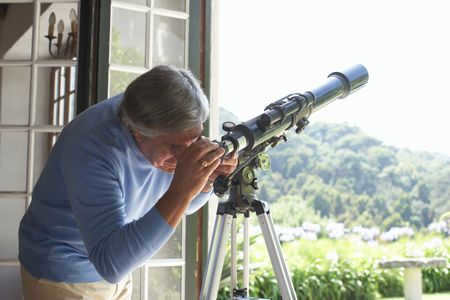
There are few scientific disciplines that can boast of having such a large global fanbase as astronomy. With over 10,000 professional astronomers worldwide, the number of amateur enthusiasts in Russia alone is equivalent. Today, amateur astronomy has become a prestigious and high-tech hobby, with many individuals investing thousands of dollars in buying telescopes, setting up observatories, and even traveling to witness rare celestial events. In fact, some of the equipment used by amateur astronomers, such as specialized astronomical CCDs for astrophotography, can be just as capable as professional-grade devices.
However, it is not necessary to invest in expensive equipment in order to engage in stargazing. In fact, all you need is your own eyes. Begin by using a basic star map to locate and identify constellations in the night sky. This activity can be incredibly captivating. Additionally, you may be fortunate enough to witness the breathtaking sight of a shooting star. These are actually tiny meteor particles that enter the Earth’s atmosphere at incredible speeds, faster than any spacecraft. The best time to see a large number of shooting stars is around August 10-12, during the Perseids meteor shower, which is one of the most abundant meteor streams. During these days, shooting stars can be seen almost every minute. Skilled amateur astronomers are able to assess the brightness, color, direction, speed, and length of a shooting star, and even plot its path on a star map. Moreover, through careful analysis, these observations can provide valuable data on the density and orbit of the meteor stream around the Sun. Therefore, even without telescopes, amateur astronomers can make significant contributions to the field of science.
However, if your heart truly yearns for the vast expanse of the celestial heavens, it is inevitable that you will seek to possess a tool to aid in your exploration. Initially, one might opt for a modest telescope, although it is perhaps wiser to opt for a pair of binoculars, such as the 10×50 variety, which offers a tenfold magnification with 50-millimeter lenses. Opting for a higher magnification will result in a smaller field of view and increased image instability. Nevertheless, even a less potent instrument is deserving of being affixed to a tripod.
Binoculars significantly enhance the number of visible stars, increasing it by hundreds of times. A keen observer will discover numerous star clusters, nebulae, and galaxies. The Moon reveals its large craters, Venus displays its phases, and Jupiter showcases its satellites. Among these satellites, Io is particularly captivating for beginners. It completes a revolution around Jupiter in just 42.5 hours, allowing for daily observations of its fusion with and separation from the planet’s disk. The other satellites also exhibit continuous movement, albeit at a slower pace. To effectively track these satellites, it is recommended to utilize a small, free program called JupSat95, which provides real-time satellite positions.
- Select a night during the new moon or last quarter phase (e.g., July 7 to 17 this year).
- Position yourself away from the illumination of city lights.
- Assume a comfortable position. The ideal choice is to recline on your back inside a cozy sleeping bag. Avoid attempting to observe the stars with your head tilted backward.
- Place a red light filter over your flashlight (you can fashion one out of a plastic bag).
- A green laser pointer will be useful for pointing out celestial objects, as the particles in the air allow for their visibility.
- If you wear glasses, opt for lenses that fully correct for nearsightedness (note that these lenses should not be worn on a daily basis).
Computer instead of a telescope
Indeed, the computer will serve as your primary instrument. Without it, you will be unaware of what, where, and when to observe. To supplant astronomical calendars, there are programs-planetaria that provide collections of tables with the coordinates of the Sun, Moon, planets, and other celestial objects for various dates throughout the year. These programs clearly display the positions of these luminaries in the sky and enable you to closely track their movements.
Using a planetarium is a great way to easily determine the visibility of planets. By selecting the desired date and adjusting the time, you can find the moment when a planet is at its highest point above the horizon or when it is closest to other celestial objects. Planetarium programs also have the capability to calculate the apparent positions of asteroids and comets in the sky. To do this, simply search the internet for the orbital parameters of the desired celestial body and input them into the program. If you’re using a paid program, you can typically rely on their support service to promptly provide data on any newly discovered objects.
Most planetariums have the capability to display a much larger number of celestial objects than what can be observed without any aids. These include deep sky objects such as galaxies, nebulae, and star clusters, which can only be seen with binoculars or telescopes. Advanced programs even have the ability to access databases containing hundreds of thousands of stars, like the “Tycho” catalog derived from data gathered by the astrometric satellite “Hipparchus”. These extensive catalogs are essential for planning and preparing for observations with telescopes.
Refractors. They are known for their reliability due to their closed tube design. However, as the lens diameter increases, their cost rises significantly and they also become longer in length. As a result, refractors with a diameter exceeding 125 mm are not commonly found among amateur astronomers. On the other hand, reflectors utilize a concave mirror positioned inside the tube to gather light. This mirror forms an image in front of itself, and in order to avoid obstructing the main mirror, the gathered light beam needs to be directed outside the tube.
In the Newtonian system, a diagonal mirror is utilized for the purpose of reflecting. The eyepiece is secured at the top of the tube. In smaller Newtonian telescopes (up to 150 mm), the primary mirror is typically simple to manufacture, with a spherical shape, making them cost-effective. In a Cassegrain reflector, a convex secondary mirror directs the collected light outward through a central aperture in the main mirror. Cassegrain telescopes have a shorter tube and are easier to maneuver, although the trade-off is more intricate optics: the primary mirror is shaped like a paraboloid, while the secondary mirror is shaped like a hyperboloid. These mirrors are meticulously polished by hand, resulting in a more expensive telescope. Both Newtonian and Cassegrain telescopes have open tubes, so they must be handled with great care to avoid moisture and dust settling on the mirrors.
In 1941, Dmitry Maksutov, a prominent Soviet optician (1896-1964), revolutionized telescope design with his invention of the catadioptric system. This innovative design combined the best features of various types of telescopes. The Maksutov telescope, which resembles the Cassegrain externally, utilizes two spherical mirrors and a specially designed correcting meniscus to eliminate distortions. The Maksutov telescope offers affordable optics similar to the Newton telescope, a compact tube like the Kassegren, and the enclosed design of a refractor. While crafting a meniscus lens may be challenging in artisanal settings, industrial production solves this issue. Today, Maksutov telescopes, alongside the Schmidt-Cassegrain catadioptric system, are beloved by amateur astronomers worldwide.
Nevertheless – an optical instrument for viewing distant objects
Telescope mounts
Many beginner astronomers often overlook the significance of a comfortable and secure telescope mount. It can be quite frustrating to observe with an unstable instrument. While a good photographic tripod may be sufficient for a telescope, more advanced instruments require a specialized mount that allows for rotation on two axes, as well as fixing and smoothly adjusting the direction when searching for specific celestial objects.
An azimuth mount has vertical and horizontal axes, which simplifies its design. However, when using this type of mount, you need to manually track the object in the sky by simultaneously rotating the telescope on both axes. This task can be easily handled by a computer, although the image in the field of view may slowly rotate. While this rotation may not be noticeable to the naked eye, it requires a special derotator for astrophotography in order to compensate for the rotation of the image.
In the equatorial mount, one of the axes (known as the polar axis) is aligned parallel to the Earth’s rotation axis and the celestial sphere. To accurately follow the movement of celestial objects, such as stars, it is necessary to rotate the telescope smoothly around this axis. This task is easily accomplished with the assistance of a small electric motor, which is essential for astrophotography. Without this motorized assistance, stars captured in telescope images would become blurred within a fraction of a second. The German equatorial mount is the simplest type and is commonly used for refractor telescopes and small Newtonian telescopes. However, it does require the use of a counterweight, which can be seen as a disadvantage.
The fork mount has the ability to function as both an azimuthal and equatorial mount. It offers a more compact and reliable design compared to the German mount, but it is specifically suitable for telescopes with a shorter tube that can be positioned between the fork arms. Typically, these telescopes are catadioptric models. Amateur telescopes with larger sizes, such as Newtonian telescopes, are often paired with a simplified azimuthal fork mount. This type of mount is suitable for these telescopes due to the significant weight of the primary mirror, which causes a shift in the telescope’s center of gravity. These telescopes are commonly referred to as “Dobsonians” in honor of the renowned American telescope builder, John Dobson.
Astroclubs
The landscape of amateur astronomy has been completely transformed by computerized planetariums and user-friendly telescopes. What was once considered a rare and exotic hobby has now become a symbol of wealth and intellectual refinement. In fact, many parents now purchase telescopes as educational toys for their children. However, it is important to consider what and how to observe with these instruments. Without proper guidance, these noble devices may only be used for peering into the windows of neighbors.
In Russia, the Astrofest festival is the biggest and most frequent startup celebration. It takes place every year in the Moscow area during the second half of April. The event attracts over 600 attendees who showcase up to 80 telescopes. The Siberian Astrofest has also been organized multiple times in Krasnoyarsk, and last year saw the SibAstro conference held near Novosibirsk.
Not only are clubs appealing for socializing with like-minded individuals, but they also offer resources and amenities that are simply inaccessible to individual enthusiasts. These include high-end equipment, consultations with experts, and even opportunities to observe celestial objects using professional instruments. The largest astronomy club in Russia, known as www.astroclub.ru, has been active in Moscow since 1994 and boasts a membership of approximately 60 individuals. Among the club’s assets are a collection of eighteen telescopes, a mirror grinding machine, and most recently, an expensive astronomical CCD camera specifically designed for astrophotography. Additionally, the club recently completed construction on an observatory near Zvenigorod, which houses a 10-inch astrograph.
By the way, this is not the sole amateur observatory in the vicinity of Moscow. The Domodedovo district is home to the Ka-Dar public observatory, which is particularly impressive. Among the various instruments available here, the most notable is the 14-inch “Schmidt-Kassegrain” telescope manufactured by Meade, which is highly coveted by numerous Russian universities. However, what truly sets this observatory apart is its open public accessibility. Visitors can freely partake in astronomical observations here after making prior arrangements.
Alongside its educational endeavors, the “Ka-Dar” observatory conducts scientific investigations. One of its focuses is the examination of space debris that accumulates within the geostationary orbit. Numerous decommissioned satellites have been left behind since the Cold War era, with some even being deliberately destroyed to prevent potential leaks of classified information. Presently, this debris poses a significant hindrance to the deployment of new satellites. Another area of study involves refining the orbits of Uranus’ satellites. Given that there are no planned missions to Uranus by NASA, the agency has not allocated any resources towards studying its satellites, thereby providing an opportunity for amateur astronomers to take on this work. The observatory is comprised of four employees, all of whom are amateur astronomers. Additionally, the observatory was funded by a Moscow-based businessman who prefers to remain anonymous but desires to maintain connections with the field of astronomical science.
Amateur astronomers are fond of searching for comets, as they are the only space objects named after their discoverers. Discovering a new comet can immortalize one’s name in the field of science. However, this task requires extensive knowledge of the night sky, consistent observations, and a bit of luck. On the other hand, astrophotographers primarily focus on finding asteroids. They must take regular photographs of specific areas of the sky and meticulously compare them to identify faint, slow-moving objects.
Finally, another area of search activity involves the detection of supernovae in other galaxies. In a single galaxy, supernovae occur approximately once every century, however, since there are numerous galaxies, several hundred such explosions are recorded every year. Typically, the search for supernovae in other galaxies is conducted through the examination of photographs. An amateur astronomer from Scotland, Tom Boles, has constructed an observatory equipped with three robotic telescopes specifically for this purpose and has successfully identified over a hundred supernovae. Nevertheless, some hobbyists argue that automation is undermining the charm of astronomical exploration. A priest from Australia, Robert Evans, has been devoting his spare time to the search for supernovae for many years, relying solely on visual observation with a small telescope. He has been credited with discovering over 45 supernovae, and up until 2003, when he was surpassed by Bowles, he held the title of amateur champion in this field.
Recently, the task of being a freelance researcher has become increasingly challenging. In the near future, automated telescopes will regularly scan the entire celestial sphere in search of new celestial objects. However, amateur astronomers have found new exciting opportunities for themselves. One such avenue is the search for exoplanets, or planets orbiting other stars. These planets are detected by the characteristic temporary decrease in the star’s brightness when the planet passes between the star and the observer. Of course, not every planet can be detected using this method – its orbit must be aligned with the observer’s line of sight. However, there are a large number of stars and amateur astronomers, and this method has already yielded some promising results.
- A stationary camera captures images of all the stars visible to the naked eye for a duration of 30 seconds. Subsequently, the stars start to appear blurred.
- A clock-driven telescope equipped with a camera captures the entirety of the stars visible through binoculars within a 5-minute time frame. When using digital cameras, the shutter speeds are not typically long enough, so multiple frames are taken and then stacked in PhotoShop for further processing.
- By removing the eyepiece of a telescope, it can be transformed into an ultra-long lens for an SLR camera. The camera is attached behind the eyepiece end using a special bracket.
- When photographing the Moon and planets, short shutter speeds are used due to their bright illumination from the Sun. To mitigate the effects of atmospheric shaking, multiple shots of planets are taken.
- Nebulae, galaxies, and star clusters are captured using long shutter speeds and a technique called gidirovanie. This involves manually or automatically controlling the movement of the telescope in sync with the motion of the starry sky and making necessary corrections.
- The sun can only be observed and photographed using special filters.
Eclipse enthusiasts
Not all observations can be made from the comfort of a home observatory. Some celestial events can only be seen in specific areas of the Earth, with the most well-known being solar eclipses. Typically, there are 2-3 total solar eclipses each year, and they can only be seen within a narrow strip that is approximately 100 kilometers wide. There is a dedicated community of eclipse enthusiasts around the world who travel to different locations to witness these events, often venturing to the most exotic places. Recently, the Moscow Astroclub launched the Astrotour travel agency to assist individuals in planning such trips.
However, the majority of non-professionals are not motivated by a desire to make scientific contributions. Instead, they find pleasure in the process of observing celestial objects. Some are focused on capturing stunning images – amateur astrophotography represents a unique form of technical art. Additionally, there are amateur theorists who excel at developing impressive astronomical programs and predicting phenomena for others to observe. In these cases, they are able to closely align themselves with professionals. Interestingly enough, a recent trend has emerged: more and more professional astronomers are becoming amateurs in their free time. It seems that in today’s highly computerized astronomy, they yearn for a direct connection with the Universe, which initially drew them to this field.
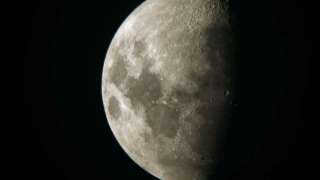
Every person has likely contemplated the idea of purchasing a telescope at least once in their lifetime. Utilizing this advanced instrument, one is able to observe various celestial objects with utmost clarity and realism. For those fortunate enough to possess a telescope, this article offers guidance on how to utilize it effectively.
Astronomers who are just starting out often have their sights set on the enigmatic and captivating Moon. It is widely believed that the best time to observe the Moon through a telescope is during a full moon. However, this is actually the least favorable phase for viewing our celestial neighbor. When the Moon is fully illuminated, it appears completely flat and devoid of any intriguing features, making it uninteresting for astronomers.
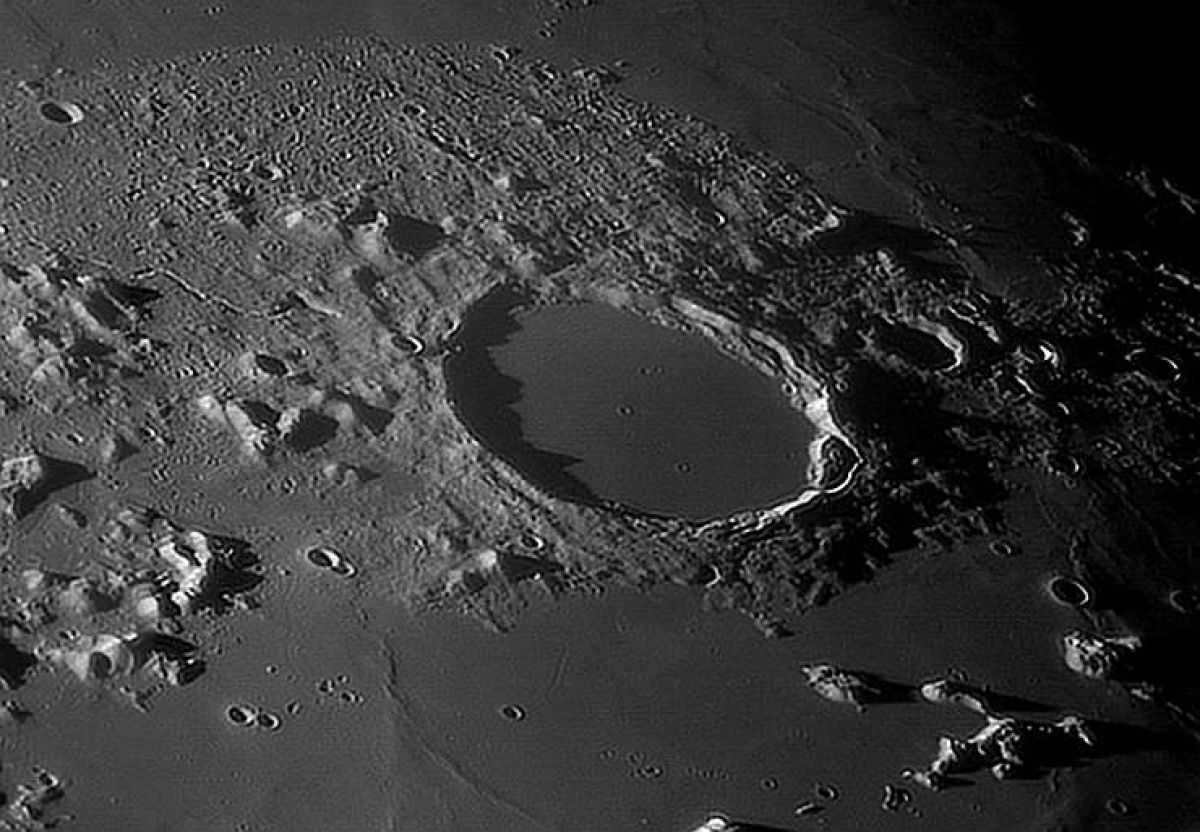
Optimal Time for Observing the Moon through a Telescope
It is recommended to observe Earth’s satellite during the first or last quarter of its phase. During this time, you have the opportunity to admire the lunar landscape along the line where the sun rises or sets on the “terminator.” This term is commonly used to describe the boundary on the lunar surface that separates the dark and light sides of the moon.
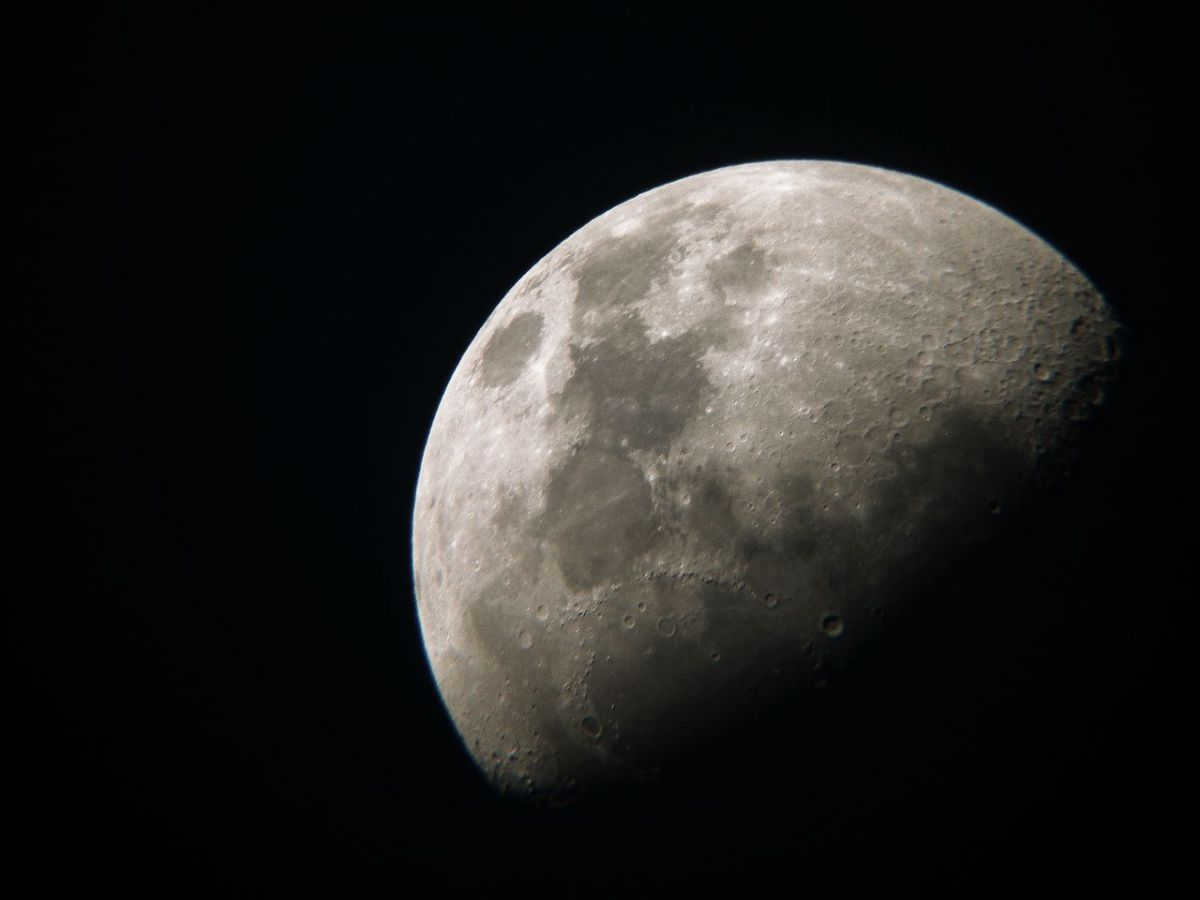
What occurs when the Moon is at its fullest
When the Moon is at its fullest, our planet’s companion is completely lit up, especially in its central area. The rays of the sun penetrate every crack and crevice on the surface of the Moon, filling every crater and illuminating every edge. As a result, a fully lit Moon would appear flat and lacking in distinctive features, which is not particularly captivating. A beginner astronomer might suspect that all spacecraft-produced photographs of the Moon are fraudulent. However, the Moon is truly fascinating and has many facets to explore.
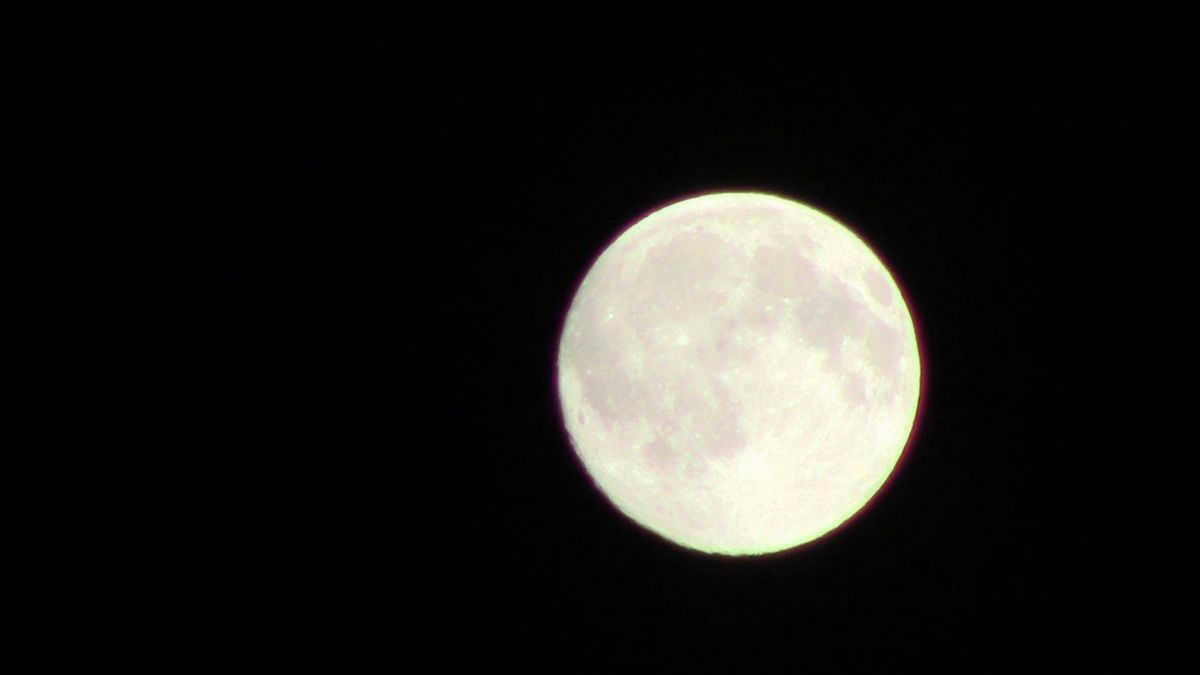
How to identify the lunar phase and the duration of a full moon by analyzing the Moon’s luminosity
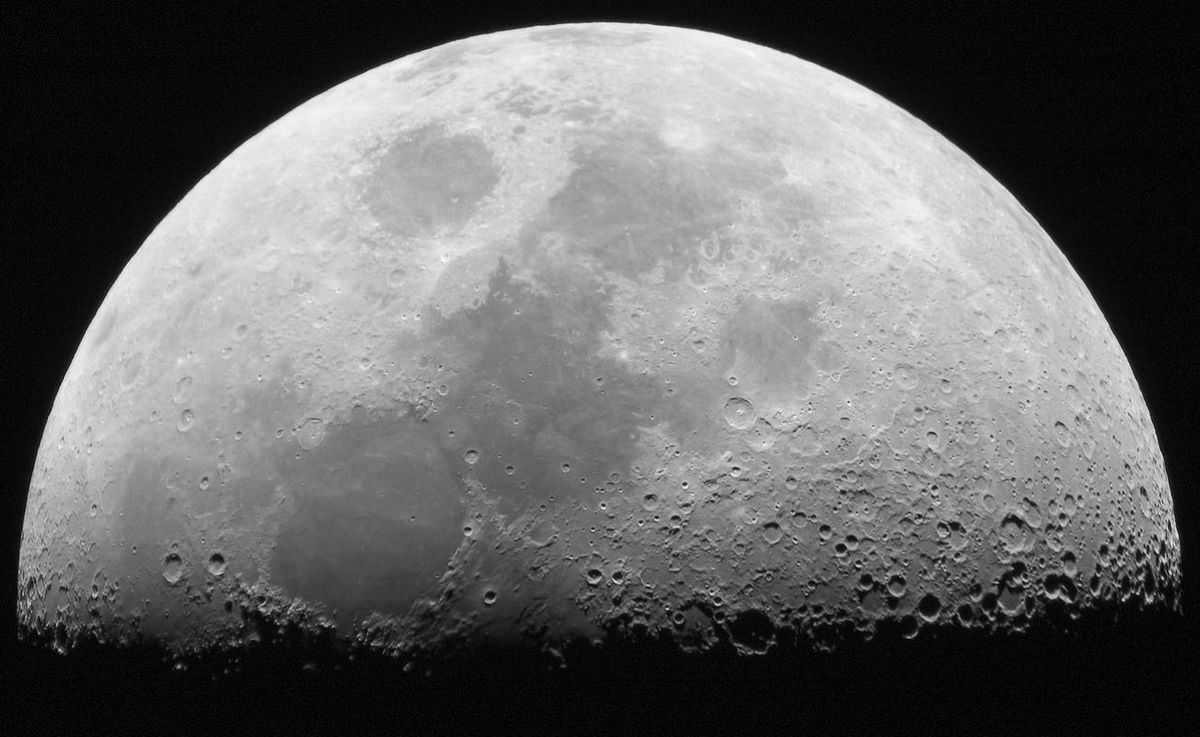
It may be assumed that the intensity of a partially illuminated celestial body should be half as intense as a fully illuminated one. This seems logical, but it is not entirely accurate. In space, things work a little differently. For instance, during the first quarter phase, the brightness of the Earth’s satellite is actually 1/11th of the brightness observed during a full moon. The brightness of the illuminated portion of the satellite reaches half of the brightness of a full moon 2.4 days before the actual full moon.
Did you know?
When it comes to depicting the Moon, artists usually choose to portray it as either a crescent or a full moon. Interestingly, there are very few, if any, famous artworks that feature just half of the Moon. It seems that paintings featuring a quarter of the moon are simply non-existent.


